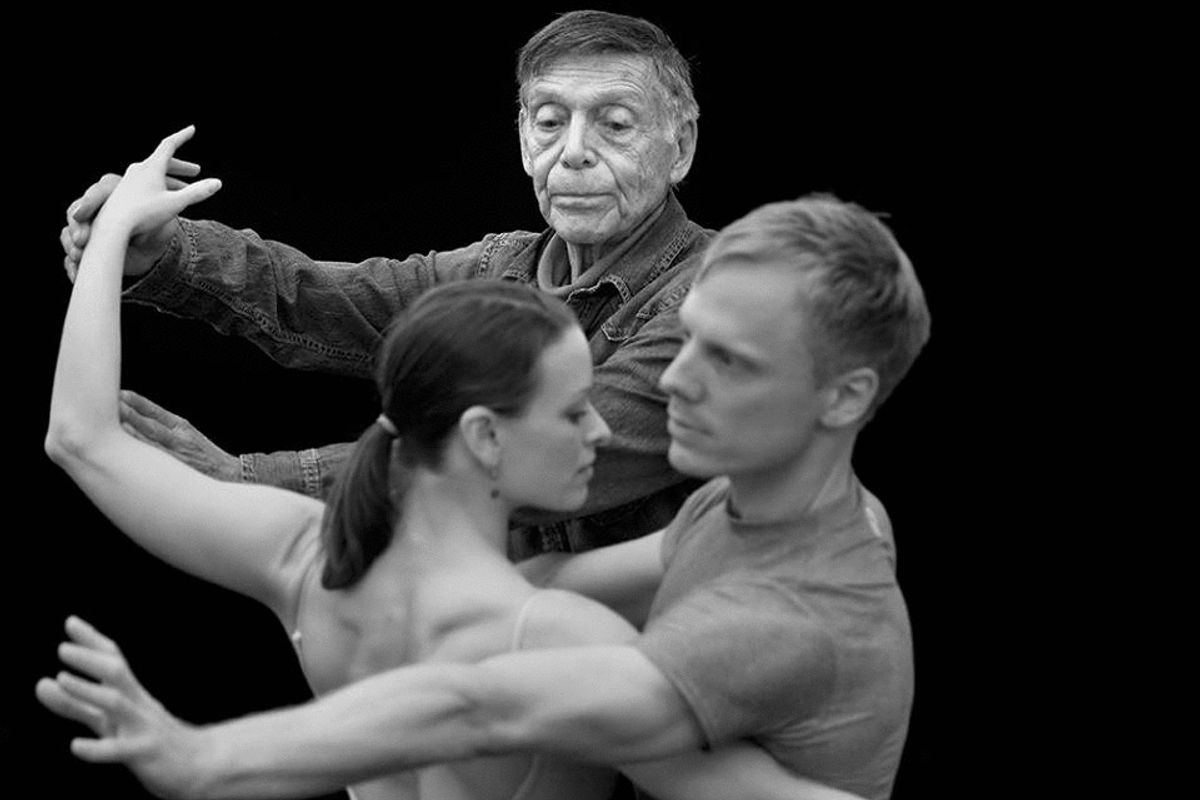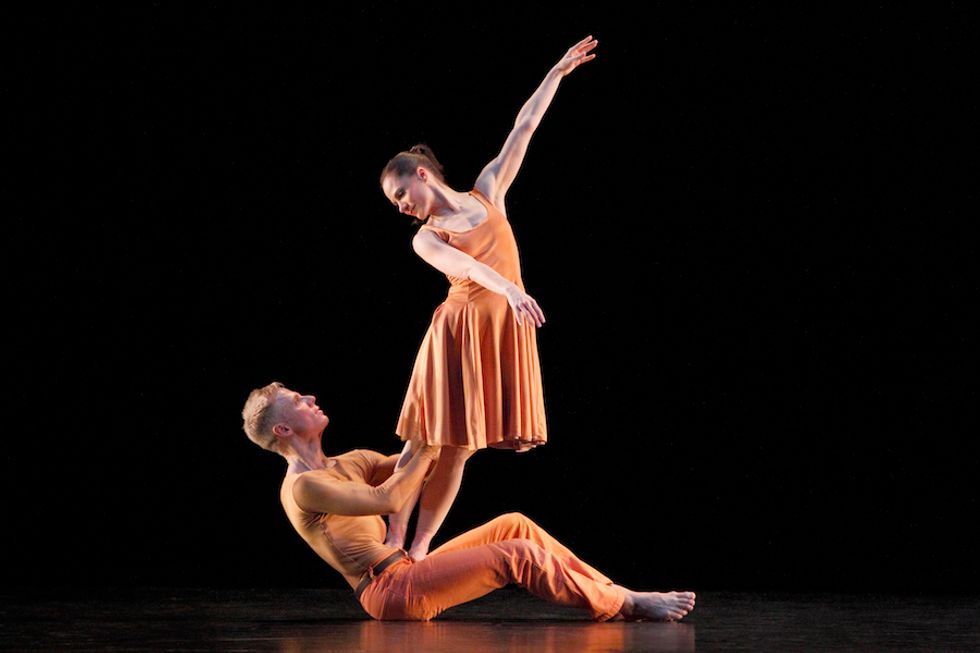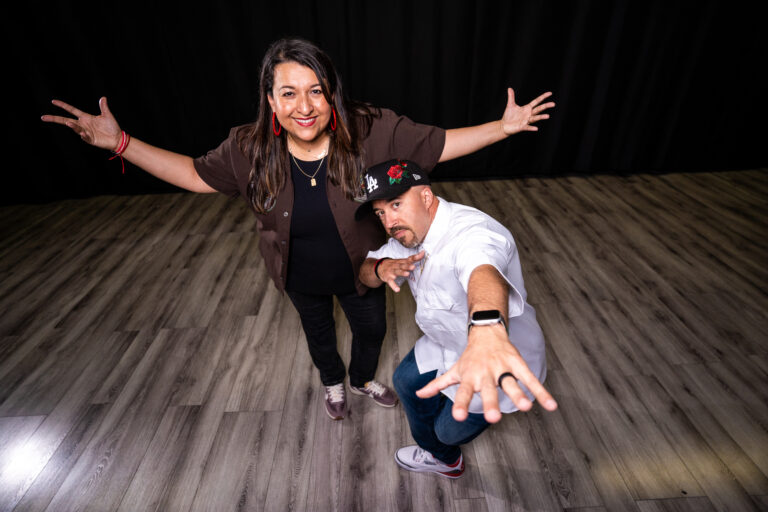
A person’s walk is like a fingerprint, according to four Paul Taylor dancers who are stepping on without their beloved choreographer. Taylor died August 29, passing the legacy of Paul Taylor American Modern Dance to Michael Novak, the second artistic director in the company’s history.
“Human movement never lies,” says Novak, who sometimes slipped into present tense when describing his mentor. “For auditions, Paul makes dancers walk across the floor in rhythm. The first time I auditioned, I didn’t get the job. I was terrified, but now that I’m on the other side of the audition process, ‘the walk’ is telling.”
“When you’re doing the walk, it’s nerve-racking and hard to know the value,” explains Eran Bugge, who recently celebrated her 13th anniversary with the company. “Now I know that it’s totally revealing. You can see a person’s control to be human and dancerly at the same time. Sometimes you can see weird coordinations, but Paul liked that.”
“Everyone is trying to project something about themselves during the walk,” says Annmaria Mazzini, who retired from the company in 2011. “You’re alone and everyone is looking at you while you’re trying to breathe and look relaxed, but you feel so vulnerable and on display.”
This diagonal stride across the floor has became the company’s audition trademark, a chance for dancers to be seen as individuals in pursuit of their dreams, beautiful flaws and all. Many perform with Martha Graham precision—a clear shift of weight. Others add arms or change focus.
Based on the walk, Taylor knew whom he would hire, according to Michael Trusnovec, who has spent 20 years with the main company and two with Taylor 2. A youthful strawberry blond, he is the most seasoned Taylor dancer among current performers. (Taylor nicknamed him “Hank from Yaphank.”)

Bugge and Trusnovec in “”Esplanade,” 2014. Photo by Paul B. Goode, courtesy of PTAMD
“Paul had an uncanny knack for finding dancers who would get along,” says Trusnovec, who notes Taylor was always watching people, not just for their athleticism, but in the way they treated each other in the sidelines.
Harmony fostered long careers and relationships—sometimes marriages—among dancers who gazed into each other’s eyes and transformed into otherworldly beings. In a studio without mirrors, they developed a sixth sense of each other.
“Paul taught me to trust,” Novak says. “Commit, despite the unknown.”
Faith in Taylor’s vision freed dancers to tumble into feverish stories. In Oh, You Kid!, performers depicted the gaiety of the 1900s, as well as the era’s acceptance of the Ku Klux Klan. As Taylor responded to an offended viewer: “Art is dangerous!”
“He liked making fun of outrage,” says Mazzini. Taylor taught her not to take herself so seriously. “He was a button pusher.”
One of Mazzini’s first major roles was the little girl in Big Bertha, a seminal piece that starts joyfully and descends into incestuous rape and spousal abuse.
“I loved how macabre and disturbing it was,” Mazzini says, chuckling. “It felt like high art. The first time I performed it, I invited everyone. My grandparents came. My dance teacher from Allentown filled up a bus of little kids to go from Pennsylvania to New York for a Sunday matinee. As I lay on the stage in my bloody nightgown and felt the cold rush of air from the curtain coming up, it suddenly dawned on me that maybe this wasn’t the right show for friends and family to see.”
As much as Taylor experimented with darkness, he found light in the glorious Esplanade and comedy in Funny Papers. If gestures were punctuation, Taylor would be a strict grammarian.
“Because he was not a man of words, I learned to listen with my eyes,” Trusnovec says. “He was specific to the end. It wasn’t just the gesture, but the space around the gesture—the timing and shape—and how it affected the viewer’s eye and heart. I think he was so particular because he had needed sign language to communicate to his [late] partner.”
As a storyteller, Taylor considered himself an observer, a sort of journalist who “reported” pedestrian movement without moralizing. While modern dance can be intimidating, Taylor communicated ideas through his stunning yet approachable dancers. Interpretation was left to the individual.
“The work ages well,” Trusnovec says. “It grows with you and your life experience. That’s why people stay in the company so long. Either they haven’t figured out how to go deeper or they have figured it out after so much time that they just want to revel in it.”
“Onstage we could transcend the fourth wall and even the theater,” says Mazzini, who could feel the spirits of former dancers and audience members. “It was almost supernatural how his dances could come alive, but then they were over.”
Despite high stakes, Taylor didn’t dwell on success or defeat. “I don’t think he was afraid to fail,” Bugge says.
Mazzini went further, conveying Taylor’s intrigue for insects and their short life cycles. “He wasn’t afraid of anything, including death,” she says.
When Trusnovec visited Taylor in June for the last time, he said, “Hey, Paul. It’s Hank from Yaphank.” And Taylor brightened up in recognition of a loyal friend. Taylor once said in an interview that he chose dancers he liked.
This year lends itself to the celebration of Taylor’s massive repertoire of 147 dances, according to Novak, whom Taylor recently advised not to be predictable. It will also be a year of firsts.
On Labor Day weekend, the company conducted its first audition without its dancemaker. Tryouts began with that famous walk.




